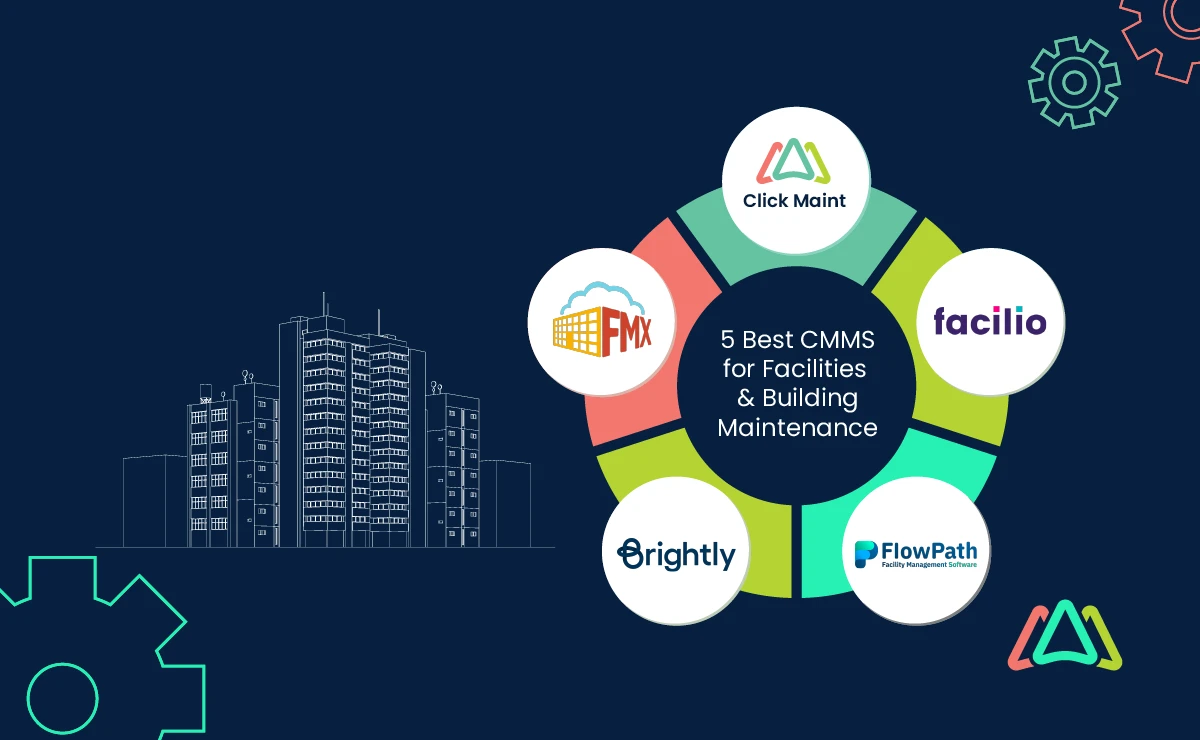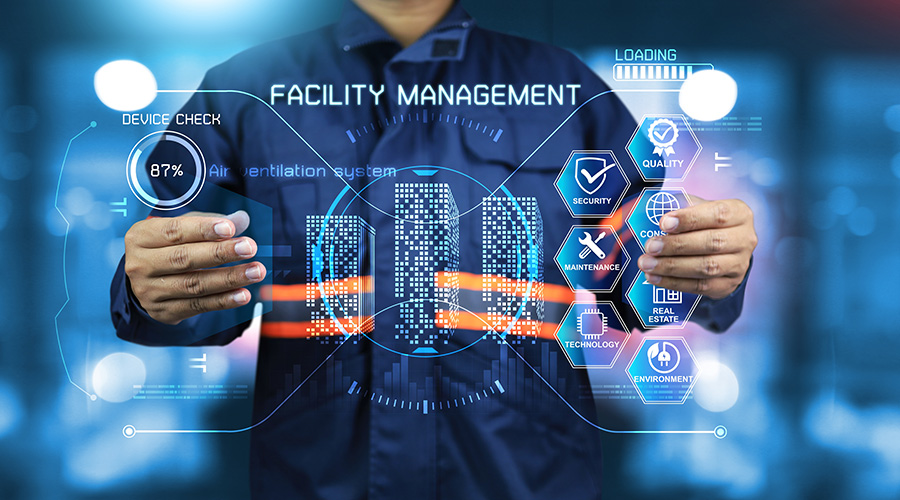Why Facility Management is Vital for Possession Durability
Why Facility Management is Vital for Possession Durability
Blog Article
Secret Fads Shaping the Future of Facility Administration in 2024
As we look ahead to 2024, the landscape of center administration is poised for significant makeover, driven by numerous essential trends. The assimilation of wise building technologies and a change towards data-driven decision-making assurance to boost operational performance while focusing on sustainability in practice.
Smart Structure Technologies

Smart structure technologies include a vast range of systems, including intelligent lights, HVAC controls, and safety and security systems. By integrating these systems, facility managers can keep track of and adjust specifications in real-time, resulting in considerable reductions in energy waste and operational costs. As an example, smart sensors can spot occupancy levels and readjust lights and temperature level appropriately, making certain that power is just made use of when needed.
In addition, these technologies facilitate enhanced data collection, enabling companies to track usage patterns and identify possibilities for more renovations. The implementation of smart structure modern technologies not just contributes to sustainability goals yet additionally produces healthier job atmospheres that can increase staff member efficiency and fulfillment.
As we move into 2024, the fostering of wise building modern technologies will likely speed up, showing a broader change towards even more intelligent, receptive, and lasting facility administration practices.
Data-Driven Choice Making
Progressively, companies are leveraging data-driven decision making to boost facility administration techniques. By harnessing information analytics, center supervisors can acquire actionable insights that considerably enhance operational effectiveness and source allocation. The combination of innovative innovations, such as IoT sensing units and real-time monitoring systems, allows the collection of substantial amounts of information on structure performance, occupancy prices, and power intake.
This wealth of info permits facility managers to determine fads, predict maintenance requirements, and proactively address concerns before they escalate. Predictive analytics can anticipate tools failings, reducing downtime and repair work expenses. In addition, data visualization tools assist in far better interaction amongst stakeholders, guaranteeing that educated choices are made collaboratively.
Moreover, data-driven techniques boost tactical planning by enabling facility supervisors to assess the effectiveness of present techniques and make educated choices concerning investments in innovation or framework. As companies increasingly prioritize operational quality, data-driven decision production is poised to end up being a foundation of successful facility management strategies in 2024 and beyond. Inevitably, the capacity to utilize information successfully will equip organizations to create extra efficient, effective, and resilient facilities.
Sustainability and Environment-friendly Practices
The focus on data-driven decision making normally straightens with the growing emphasis on sustainability and environment-friendly techniques within facility administration. As organizations progressively prioritize ecological obligation, facility supervisors are leveraging analytics to enhance resource use, minimize waste, and reduce carbon impacts. This critical technique allows the integration of energy-efficient systems, such as LED lights, wise HVAC controls, and renewable power sources right into facility procedures.
Furthermore, the execution of sustainable practices prolongs beyond power consumption. Center managers are promoting and adopting green materials reusing initiatives to develop a circular economic climate within their facilities. This not only boosts the environmental account of the company but additionally promotes a society of sustainability among workers.
Conformity with environmental guidelines is an additional important aspect driving the adoption of environment-friendly practices. By using information analytics, facility managers can keep an eye on conformity metrics and recognize areas for improvement, making certain adherence to worldwide and neighborhood sustainability requirements.
Hybrid Work Versions
A significant shift towards hybrid work versions is improving the landscape of center monitoring in 2024. This standard integrates in-office and remote job, requiring a reevaluation of room utilization, source allowance, and staff member interaction techniques. Organizations are increasingly recognizing the importance of adaptable work spaces that satisfy diverse demands and choices.
Center managers should adjust by implementing versatile office layouts that sustain collaborative efforts while giving areas for concentrated job. This consists of the integration of modern technology to help with seamless interaction and collaboration amongst remote and in-office workers. Smart structure services, geared up with sensing units and analytics, allow for real-time monitoring of room usage, allowing organizations to optimize their environments efficiently.
In addition, crossbreed work designs highlight the demand for efficient center monitoring that prioritizes staff member experience. In essence, the crossbreed job design is revolutionizing facility management, encouraging a positive strategy to meet the developing needs of the labor force.
Enhanced Resident Health
As companies embrace hybrid work models, an increased focus on passenger health is coming to be integral to center management strategies. Facility Management. This shift acknowledges that a healthy and balanced and satisfied workforce directly affects efficiency and retention prices. Center managers are currently prioritizing atmospheres that promote mental and physical well-being, integrating aspects such as natural illumination, biophilic style, and available wellness resources

Modern technology plays an important duty in this advancement. Smart structure systems can monitor ecological elements and change settings in real-time, guaranteeing ideal comfort levels - Facility Management. In addition, feedback systems, such as tenancy sensors and employee studies, allow facility managers to constantly improve wellness campaigns based upon occupant needs.

Verdict
In 2024, the future of center management will be significantly influenced by the integration of smart building modern technologies and data-driven decision-making, fostering improved operational effectiveness. Sustainability efforts will certainly prioritize discover this info here environmentally friendly methods, while the introduction of hybrid work models will certainly demand adaptable workplace styles. In addition, a heightened emphasis on resident wellness through innovative heating and cooling systems and biophilic design will add to healthier job environments. These trends jointly emphasize the evolving landscape of center management in reaction to contemporary difficulties and possibilities.
Center supervisors are embracing environmentally friendly products and advertising recycling initiatives to develop a circular economic situation within their facilities.A substantial shift towards crossbreed job designs is reshaping the landscape of center monitoring in 2024.Moreover, crossbreed job designs emphasize the need for effective center management that focuses on employee Full Report experience.As companies embrace hybrid work versions, a heightened emphasis on passenger wellness is ending up being essential to facility administration strategies.In 2024, the future of center monitoring will be significantly affected by the integration of smart building innovations and data-driven decision-making, fostering improved operational performance.
Report this page